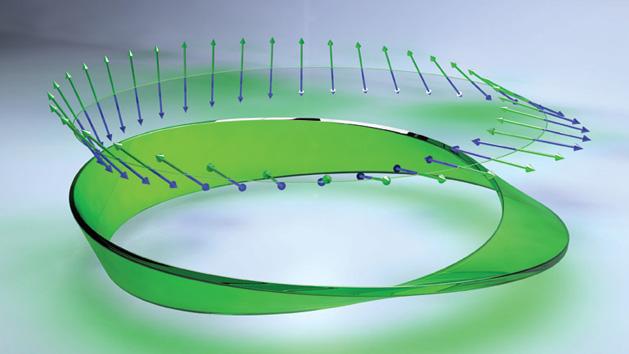laser
Latest

Boeing's portable drone-destroying laser uses an Xbox controller
Drones are playing an ever-expanding role in modern warfare, so it's no surprise companies like Boeing are developing news ways to shoot them out of the sky. Its last laser was the High Energy Laser Mobile Demonstrator (HEL MD) -- a huge weapon mounted to the top of a truck -- and now it's touting something more portable. The Compact Laser Weapons System fits in four suitcase-sized boxes and can be mounted onto a tripod. It looks like a giant camera and, like the HEL MD, uses an Xbox 360 controller for targeting. As soon as you're in range though, the system can automatically take over and track the UAV, making sure you get a clean shot. Wired reports that, in one of Boeing's demos, it only took two seconds at full power to set a drone aflame.

Exotic quantum laser could help study other planets
Scientists might soon have a much easier time discovering every last nuance of other planets. Researchers have developed a quantum cascade laser (which sounds like an amazing sci-fi weapon, by the way) that can cover a very wide range of infrared wavelengths at the same time, making short work of detecting many chemicals. Astronomers, including study backer NASA, could use it to determine the contents of a planet's surface without touching it -- important when you'd rather not risk breaking samples, or when it's not possible to touch down on the surface in the first place.

#ICYMI: Freezing lasers, tweeting video games and more
#fivemin-widget-blogsmith-image-912973{display:none;} .cke_show_borders #fivemin-widget-blogsmith-image-912973, #postcontentcontainer #fivemin-widget-blogsmith-image-912973{width:570px;display:block;} try{document.getElementById("fivemin-widget-blogsmith-image-912973").style.display="none";}catch(e){} Today on In Case You Missed It: Microsoft debuts a Kinect-based room mapping system that understands furniture; we watch LEDs change color as they're frozen in liquid nitrogen (because science!) and a programmer creates a game whose code fits into a single Tweet. From the cutting room floor: Google rolls out 60 FPS video playback for its mobile app so now the walkthrough on your phone matches the gameplay on your console. Let the team at Engadget know about any interesting stories or videos you stumble across by using the #ICYMI hashtag @engadget or @mskerryd.

Mark Zuckerberg shows off Facebook's internet lasers
Most of us use Facebook to show off a new car, an engagement or a particularly notable lunch, but Mark Zuckerberg does it a bit differently. In a Q&A session yesterday Zuckerberg referenced his company's plans for using lasers to connect more areas to the internet, and today he posted a few demonstration pictures from the Connectivity Lab. According to the Facebook founder, we won't actually be able to see the beams (that's just for show) but the connections will "dramatically" increase the speed of sending data over long distances, and this is just one of the connectivity projects in development. Last year Facebook mentioned combining this laser tech with drones and satellites to help connect the next billion people with its Internet.org initiative, and it appears that work is still moving along.

Crazy fast X-ray laser catches chemical reactions in the act
Scientists at the Department of Energy's SLAC laboratory have taken a "molecular movie" of a chemical reaction for the first time. The results of their research could give new insights into to how chemical bonds form, helping researchers better understand biological processes. To give you an idea of the difficulty of the feat, the critical part of the reaction -- the breaking apart of a ring-shaped gas molecule -- takes a mere 200 femtoseconds (quadrillionths of a second). To record such a rapid process, the researchers used the two mile long Linac Coherent Light Source (LCLS) to fire X-ray laser pulses a mere 25 quadrillionths of a second in duration.

Army and Air Force team up for laser-based landmine sweepers
Used to be that if the US military wanted to clear a roadway, runway or airfield of deadly IEDs (improvised explosive devices), they'd have to send in highly-trained and heavily armored explosive ordnance disposal (EOD) teams a la "The Hurt Locker." Problem is, this method is as ploddingly slow as it is dangerous to the servicemen and women involved. That's is why the Army and Air Force are teaming up to burn those IEDs clean out of the Earth using lasers mounted on MRAP battle trucks.

Homebuilt laser shotgun is every bit as dangerous as it sounds
If you thought building your own laser weapon at home was hot stuff, you haven't seen anything yet. Do-it-yourself fan Styropyro has built a laser "shotgun" whose eight 5W beams are adjustable with lenses, much like you'd adjust the choke on a conventional shotgun to narrow or widen its buckshot spread. As you might gather, 40W of combined laser power is pretty powerful -- and unbelievably dangerous. The gun can destroy everything from balloons to ping pong balls, and there are reflected beams that could easily smack someone's eye. Don't try this at home, folks. It's still an impressive feat of homebrew engineering, though, and Styropyro is hoping to make something "even crazier" before long.

This tiny robot head replaces your mouse with a laser-projected one
If you don't want to be reliant on (or still don't really like using) a trackpad, and tire of dragging a full-sized mouse around, then the Odin, a laser-projected mouse, might be worth a look. You've seen (even very recently) laser projected interfaces that cover keyboards, but the team that made Odin says it's the world's first laser-projected mouse interface. Which sounds pretty cool... as long as you're willing to carry around the disembodied head of a tiny Transformer when meddling with spreadsheets. We just gave it a cursory web browsing test, and while it lacks, obviously, the physical feedback of either mice or clickable trackpads, it behaves a whole lot the former. We just wished it looked a little, well, subtle.

Scientists want to blast space debris with frickin' lasers
To combat the increasingly dense layer of dead satellites and miscellaneous space debris that are enshrouding our planet, no idea -- nets, lassos, even ballistic gas clouds -- seems too far-fetched to avoid. Now, an international team of researchers led by Japan's Riken research institute has put forward what may be the most ambitious plan to date. They propose blasting an estimated 3,000 tons of space junk out of orbit with a fiber optic laser mounted on the International Space Station.

Lasers quickly load thousands of cells with nano-sized cargo
Doctors dream of injecting cells with large nanoscopic cargo to treat or study illnesses. The existing approach to this is extremely slow, however. At one cell per minute, it would take ages to get a meaningful payload. That won't be a problem if UCLA scientists have their way, though -- they've developed a technique that uses lasers to inject legions of cells at a time. The concentrated light heats up the titanium coating on a chip until it boils water surrounding the target cells, creating fissures that let the cargo inside. It only takes 10 seconds for the laser to process an entire chip's worth of cells, and researchers estimate that they could fill a whopping 100,000 cells per minute.

'Space Invaders' with real lasers is delightful, dangerous
What do you get with a laser cutter, Arduino know-how and way too much time on your hands? A slightly hazardous, live action Space Invaders game, of course! Maker Martin Raynsford created a silly, but wickedly fun real-world version of the classic arcade game just in time for Arduino Day on March 28th. The paper invaders are clipped to a plate that uses stepper motors for left/right and up/down movement, while the 80W laser cutter is driven side-to-side by an Arduino Nano controller hooked up via USB to a PC.

Lockheed Martin's laser can stop a truck from over a mile away
Lasers have staggering range, can attack land or air-based targets and are dirt-cheap to fire, making them ideal for a military with one eye on the budget. Now, Lockheed Martin has worked out that the technology could also be used for stopping a car without resorting to lethal force. The company has been testing out a new fiber-optic laser, called ATHENA, which was able to burn through the engine manifold of a truck that was over a mile away.

Scientists make a Mobius strip of laser light
Unless you count incidents in Star Trek episodes, Möbius strips don't really occur in nature -- you have to create that freaky one-sided shape yourself. However, a worldwide team of scientists may have produced the next best thing. They've created a Möbius strip of light by manipulating the polarization of the light's inherent electromagnetic field. The trick involves firing a highly focused laser beam through a liquid crystal lens to give it a very specific polarization. When the light scatters at the focal point with the help of a nanoparticle, that polarization creates tiny, twisted loops. While these strips were made in a lab, of course, the experiment shows that they're at least possible in nature.

Sony's new 4K projectors: choose between 'cheap' or lasers
Sure we can spend all day at CES checking out ridiculously large UHD TVs, but if you want to max out your home theater then a projector is the only way to go. Luckily, Sony has two fresh choices here at CES 2015 if you can afford them. First up is its VPL-VW350ES, which qualifies as the value option by bringing its 4K capabilities for under $10,000 -- hardly cheap, but until now the cheapest option has been the $15,000 VPL-VW600ES. On the opposite end of the spectrum is the laser-powered VPL-GTZ1. We saw it last year as a part of the Life Space UX concept, but for the last few months, New York's well-heeled customers have been able to pick one up for just $50,000. Naturally, Sony brought two of them to CES, showing off their "ultra short-throw ability" to beam a 4K image on a wall from just a few inches away. Perhaps the perfect choice for someone with more money than space, we will sadly have to pass on taking either one home, for now.

The Navy's new laser can do more than just shoot down drones
We've all seen how good the Navy's experimental laser is at shooting down drones, but it turns out that the hardware's got more than one party trick. A report by the Wall Street Journal has revealed that military types are also praising the surveillance capabilities of the gear, describing it as a "Hubble telescope on the water." The device is also earning praise from the Navy's accountants, since while each surface-to-air missile costs around $400,000, each shot from the laser is a paltry 59 cents. As a result of these trials, the Navy will now deploy the USS Ponce in the Middle East for the next year with orders to test the weapon's self-defense capabilities. [Image credit: John F. Williams/US Navy, Flickr]

Dutch trains get lasers to zap track debris
You might not see leaves as hazards, but train operators would beg to differ -- foliage on the tracks not only makes it harder for trains to stop, but also messes with anti-collision signals. The greenery might not be much of a danger for much longer, however. Dutch Railways is testing a laser system that zaps leaves (and other organic material) before it reaches the wheels, keeping the tracks clean. You can already use water jets and sand gels to do this, but they have limited supplies and sometimes damage the rails. The lasers run so long as the train has power, and they actually help the metal by drying it and preventing leaves from sticking.

High-speed camera tracks light at 100 billion fps
For most of us, high-speed image capture, say 120 or 240 frames per second, is enough to get a good look at stuff happening in the blink of an eye -- like a water droplet hitting the ground or a Bichon Frisé snagging his favorite ball. For faster subjects, industrial-strength high-speed cameras can grab tens of thousands of frames per second (or more). But when your rapidly moving target is light itself, you're going to need something a bit quicker -- to the tune of 100 billion fps, according to Nature.

The Big Picture: a laser-beamed satellite image of Berlin
At first glance, the satellite image above may seem like one of the many that have been shared in the past. What you're looking at, though, was delivered in a much more timely manner than the imagery which came before it. For the first time ever, the European Space Agency has used a laser to beam a photograph to Earth -- of Berlin, in this case -- stretching around 36,000 km (or roughly 22,000 miles) across space and delivering it almost in real time. The ESA was able to accomplish this by linking up its Sentinel-1 and Alphasat satellites, both of which are equipped with a laser communications system that makes it possible to deliver data at super high speeds.

US Navy puts its first laser weapon into service
It's official: the US Navy has entered the future. Vice Admiral John Miller tells Bloomberg that the USS Ponce, an amphibious transport, has been using the Navy's Laser Weapon System (LaWS) in the Persian Gulf since late August. The high-tech arsenal is no threat to larger vessels, but it's potentially ideal for defending against Iran's fleet of smaller ships. The Ponce can use non-lethal laser flashes to spook enemies or thwart their sensors, and it can destroy small craft (including airborne drones) if they don't heed warnings. It'll take some time before laser weapons are a common sight on the high seas, since the Navy wants to know how it fares in real-world conditions; dust, heat and other Gulf conditions could lead to failures. If it pans out, however, there's a real chance that the days of conventional small deck guns are numbered. [Image credit: John F. Williams/US Navy, Flickr]

China will use lasers to take down low-flying drones
In order to defend itself against small drones, China built a laser-based system that can shoot down the compact aircraft up to 1.2 miles away. According to the official Xinhua news agency, the tech can bring down the rogue flying machines within five seconds of locating them at altitudes of up to 500 meters (1,640 feet). It's said to be effective against the small UAVs flying at speeds of up to 112 MPH, and will primarily be used to secure events in urban locales and lock down unauthorized mapping efforts. The new system can be installed on existing vehicles to ensure troublemakers and their drones are kept from causing any mayhem. In statement by the China Academy of Engineering Physics (CAEP), tests of the laser-based setup showed a 100 percent success rate, shooting down more than 30 drones during the trials. The CAEP is working on more robust systems with longer range as well. [Image credit: Fabrice Coffrini/AFP/Getty Images]









